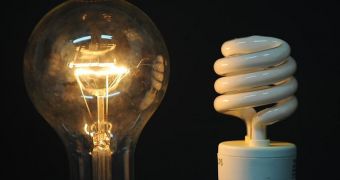Information recently shared with the public by the Energy Information Administration in the United States says that, in the year 2013, the power consumption of the average American household dropped to about 10,819 kilowatt-hours.
To put things into perspective, it must be said that the last time such figures were recorded was back in 2001, when average consumption was documented to be somewhere around 10,535 kilowatt-hours.
This means that, despite the electronics bonanza, homes in the United States have somehow managed to keep their electricity use in check.
In fact, it seems that 2013 was the third year in a row when the country experienced a drop in average household electricity consumption.
Day News tells us that, all things considered, the fact that the electricity use of homes in the United States is now at its lowest levels in well over a decade is due to the fact that the country has implemented stricter building codes.
More precisely, homes are better sealed than they used to be. This means that air-conditioned air or heat do not seep out all that easily, and less energy is used to re-cool or re-heat households.
Interestingly enough, these measures were not implemented chiefly out of environmental considerations, but in order to lower electricity bills.
Besides having well-insulated homes, American now use gadgets and gizmos that are significantly more energy-efficient than their predecessors. Most of the electronics commonly found in households also require less power to keep up and running.
For example, air-conditioning units and LED TVs now used across the country both use about 20% less energy than the ones belonging to previous generations.
Lastly, the United States has taken steps towards phasing out incandescent light bulbs, which means that folks living in the country have been forced to switch to more energy-efficient lighting options.
When compared to their forefathers, LEDs and compact fluorescent bulbs use some 20-30% less power, yet provide as much – sometimes even more – light.
The country's Energy Information Administration predicts that, in 2014, the electricity consumption of the average American household will drop by another 1%.

 14 DAY TRIAL //
14 DAY TRIAL //